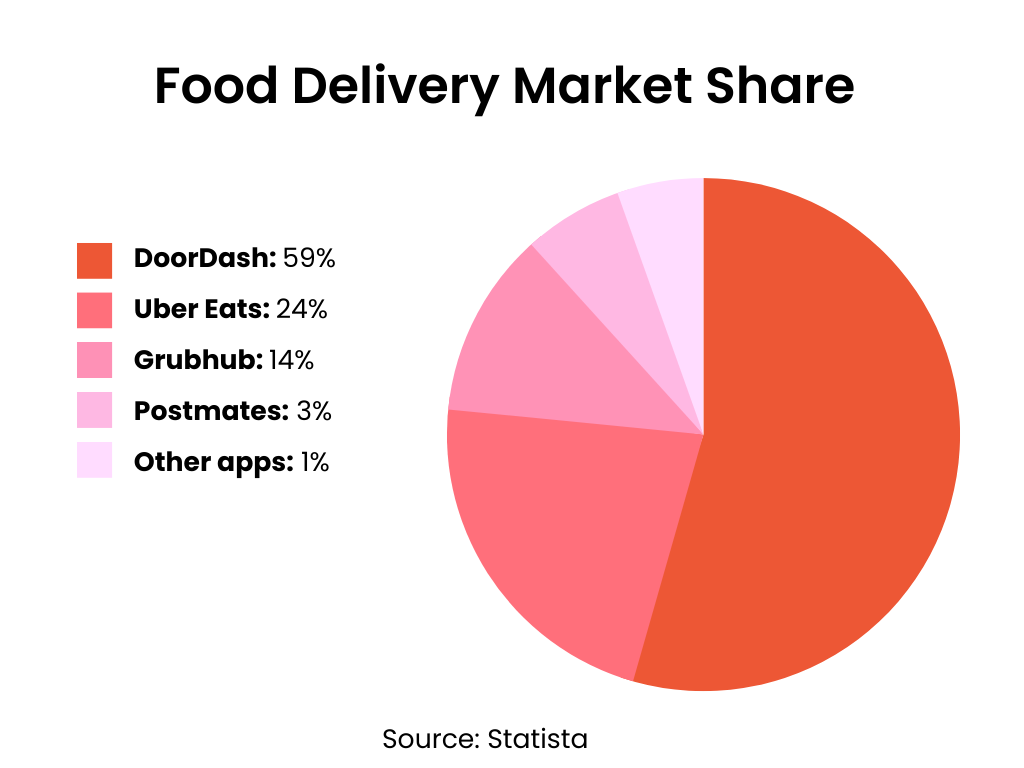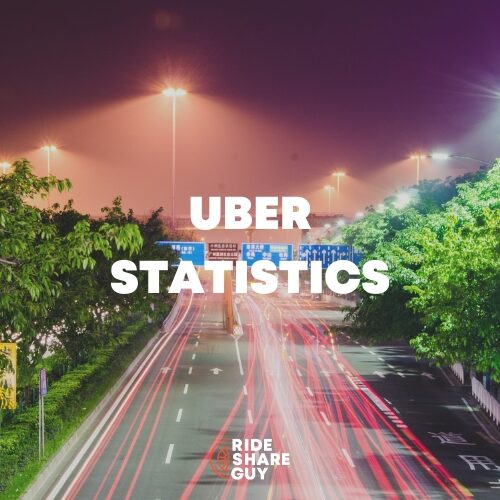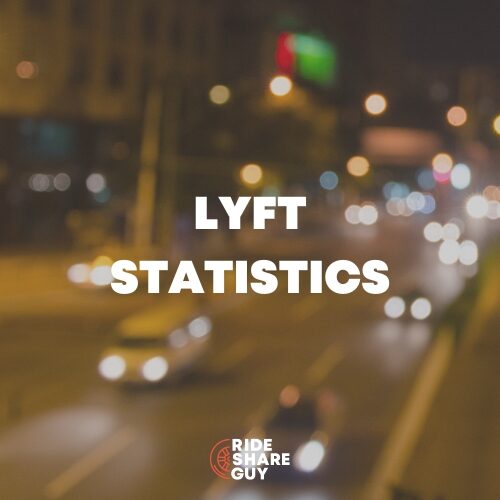In 2009, Garret Camp and Travis Kalanich founded Uber to make hailing a ride easier and more affordable. Today, Uber is the largest rideshare company in the world. In addition to helping people find rides, Uber has provided a source of income for droves of drivers around the world.
To learn just how many Uber drivers are out there, we dug into the data. Read on for some key stats about the number of Uber drivers in the US and abroad.
Whether you want to avoid the competition or use this info to hustle harder and beat that competition, here’s a breakdown of how many Uber drivers are out there.
How Many Uber Drivers Are There Worldwide?
In its 2022 Q4 financial report, Uber said it had 5.4 million drivers and couriers, and 131 million monthly trips in the last year.
Uber has more than doubled its driver base over the last few years. In 2017, Uber co-founder Garrett Camp stated that Uber had 2 million drivers and 65 million riders. In 2020, Uber updated its city count, noting that its services are available in over 10,000 cities worldwide, across 72 countries.
Since Uber left China, the US is Uber’s largest market for passengers, with India following behind. The most recently available data from 2018 showed Uber had an estimated 1.5 million drivers in India.
How Many Uber Drivers Are in The United States?
In 2019, Uber claimed to have 1 million drivers in the US, which is one of its largest markets. That number has likely grown a lot in recent years as Uber has surpassed 5.4 million drivers worldwide.
As many people return to the office and work-related travel and depend on rideshare services for their commute, the demand for rideshare drivers will continue to grow. A the same time, more and more people are choosing to join the gig economy, looking to ride-hailing apps like Uber as a source of income.
Which State Has the Most Uber Drivers?
Uber doesn’t release a state-by-state breakdown of how many drivers it has. However, we can assume that larger states with major cities generally have the most Uber drivers.
In 2020, Uber economist Alison Stein reported that California had 209,000 Uber drivers. New York has also posted high numbers of gross bookings.
Uber also released a report stating that 24% of its rides originated in five cities, three of which are in the US:
- New York City
- Los Angeles
- San Francisco
- London
- São Paulo
Number of Uber vs Lyft Drivers
Unlike Uber, Lyft is only available in the United States and Canada. While it doesn’t specify where its drivers are located, the company claims to have 2 million drivers.
We can assume the majority of these drivers are in the US since Lyft is limited to 10 Canadian cities. For reference, it’s available in a total of 656 cities in the US and Canada combined.
Again, Uber has 5.4 million drivers across 10,000 cities worldwide. It last updated its US driver count to 1 million in 2019.
Number of Uber Eats Drivers
Uber has been pushing much of its large driver force toward Uber Eats. Uber’s business model encourages entrepreneurs to increase their earnings by driving for Uber and making deliveries on-demand for Uber Eats.
Today, Uber Eats 24% of the food delivery industry’s market share, second to DoorDash.
Here’s a quick breakdown:

As delivery gets more popular with drivers, Uber Eats will likely become saturated.
What Is Uber’s Market Share in the US?
According to Bloomberg’s Second Measure, Uber led with 72% of the US market share of ridesharing companies in 2022.
In a 2022 Reuters report, Atlantic Equities analyst James Caldwell said that his business thinks “Uber has done a much better job at rebuilding driver supply, likely leaving Lyft with a structurally smaller share of the market than it had pre-pandemic.” The larger Uber’s market share continues to grow, the more drivers it will have.
Uber Driver Gender Gap
A 2020 study from Stanford found that approximately 27% of the US’s Uber drivers are women.
The study focused on driver data from 2015-2017. Of the 1.87 million drivers working during that time period, 512,000 were women.
It also looked at the disparity between men’s and women’s hours, pay, and attrition rate. Here are a few of its findings:
| Men | Women | |
| Hours worked per week | 17.98 | 12.82 |
| Hourly earnings | $21.28 | $20.04 |
| Weekly earnings | $397.68 | $268.18 |
| Attrition rate (6 months) | 65% | 75% |
As you can see, men outearn women on the Uber app, by an average of more than $130. While this is largely due to the fact that men tend to spend more hours driving for Uber, there’s also an hourly wage gap.
And it’s worth noting that women are more likely to quit driving for Uber within six months of signing up to drive with the app.
Driver Churn
According to a 2020 report released by Uber, approximately seven million Americans used ‘digital platforms for work’, with one million of those driving for Uber.
As we’ve covered on RSG before and Uber itself has reported, about half of all drivers quit after just one year. And Stanford’s Uber Pay Gap analysis cited that 68.1% of drivers quit within 6 months.
This is partly due to the nature of the gig economy—a lot of people pick up gigs while they’re looking for full-time work or saving for a short-term goal. Others quit using ridesharing apps after experiencing burnout from the nature of the job and limited earning potential.
The coronavirus pandemic undoubtedly affected driver churn. In 2021, MarketWatch shared Chicago shed over half the number of drivers they had pre-pandemic.
As businesses, travel, and social events came to a halt, so did the need for ride-hailing services. A lot of drivers were also fearful about the risks of contracting or spreading COVID-19.
Since life has begun to return to normal, driver churn should be less tumultuous in the next few years. To get drivers back on the road and attract new drivers, Uber introduced a $250 million stimulus in 2021. The package was used to boost peak incentives and offer a steady guaranteed rate.
Frequently Asked Questions
How many Uber drivers are there in the world?
Uber reportedly has over 5.4 million drivers worldwide in 2022, with at least 1 million drivers in the United States.
Are there more Uber or Lyft drivers?
Uber has more drivers than Lyft. While Uber has 5.4 million drivers worldwide, Lyft has approximately 2 million.
How many Uber and Lyft drivers are there in the United States?
Combined, there are likely 2 million Uber and Lyft drivers in the US, but that number may be closer to 1.5 million given the overlap (many drivers drive for both companies).
According to the annual Rideshare Guy survey, ⅔ of drivers drive for both Uber and Lyft. That means not every Lyft driver drives for Uber, and not every Uber driver drives for Lyft – but over half of the drivers drive for both.
How many Uber drivers use an Electric Vehicle (EV)?
In 2022, Uber announced a plan to offer a fleet of 25,000 electric vehicles across Europe by 2025 in a partnership with Hertz.
According to Uber, Teslas rented through the Hertz program have completed 5+ million Uber rides and traveled 40+ million miles in the United States.
In the survey, conducted in late 2022, 94% of drivers reported a positive experience driving a Hertz Tesla with Uber and 77% said they would stay with the program or purchase an electric vehicle.
The Future of Uber Drivers
Will the number of drivers and passengers Uber and Lyft continue to skyrocket or plateau? There is a case to be made for these numbers to fall flat in the coming years – meaning Uber driver numbers in the US could continue to fall without a corresponding increase.
7Park Data, an NYC-based data intelligence company, makes the compelling argument that Uber’s (and Lyft’s) ridership may not increase as it has been.
7Park Data found that 20-25% of US smartphone users have the Uber app installed, and it seems to reason that leaves plenty of opportunity for Uber and Lyft to market to the remaining 75-80% of people who don’t have Uber downloaded to their phones.
However, “Uber’s largest markets are major U.S. cities where ride-sharing is more useful than using personal vehicles or public transportation.” It’s not as common in cities and towns that are more spread out or rural.
In those areas, people are more likely to own and drive their own cars versus taking an Uber or Lyft. That said, there is still opportunity in other markets (like travel and commuting), which you can read more about here.
Looking for more Uber stats? Read our Uber statistics article here.



